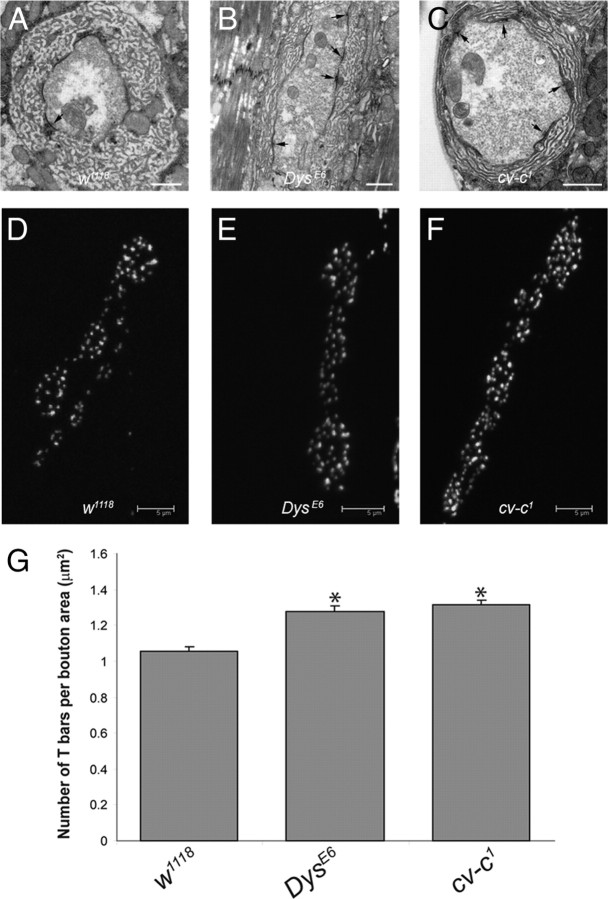Figure 5.
The number of active zones with T-bars per bouton is increased in the absence of RhoGAP cv-c. No major change of the bouton morphology of NMJs of muscle 6 and 7 at the ultrastructural level was observed among w1118 (A), DysE6 (B), and cv-c1 (C) larvae, except for an increase in the numbers of T-bars (arrows). Scale bars, 1 μm. This increase in T-bar numbers was confirmed using the NC82 antibody that recognizes Bruchpilot, a T-bar associated protein. NC82 antibody stainings of w1118 (D), DysE6 (E), and cv-c1 (F) larval body walls are shown. Scale bars, 5 μm. G, Bar graph of the number of NC82-positive AZs per bouton area is shown for each genotype (N = 5), showing a significant increase for DysE6 (1.31 ± 0.03; n = 98) and cv-c1 (1.28 ± 0.04; n = 97) compared with the wild-type control w1118 (1.06 ± 0.02; n = 78). *p < 0.001. N represents the number of larvae and n the number of boutons that were analyzed.

